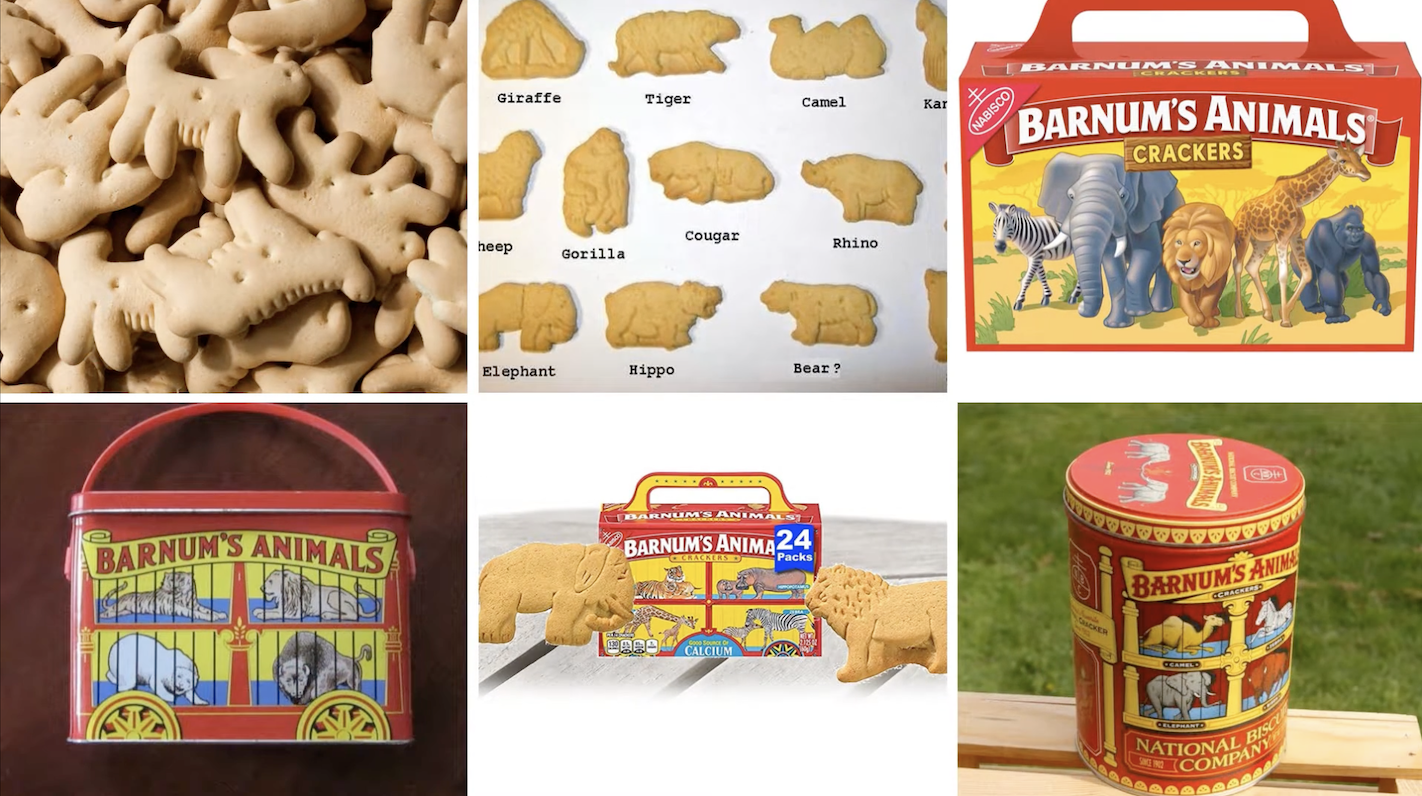
Animal Crackers have been a beloved snack for over a century, but recent changes to the iconic box have sparked both excitement and controversy. From the circus-themed packaging with animals behind bars to the updated, cage-free design, the shift reflects more than just a change in aesthetics—it signals a broader cultural transformation. As we dive into the history of these classic treats and the bold redesign that has shaken the snack world, get ready to uncover quirky facts, nostalgic moments, and a fascinating journey that spans over 120 years of Animal Crackers.
1. England’s “Animal Biscuits” Inspire a Snack Revolution
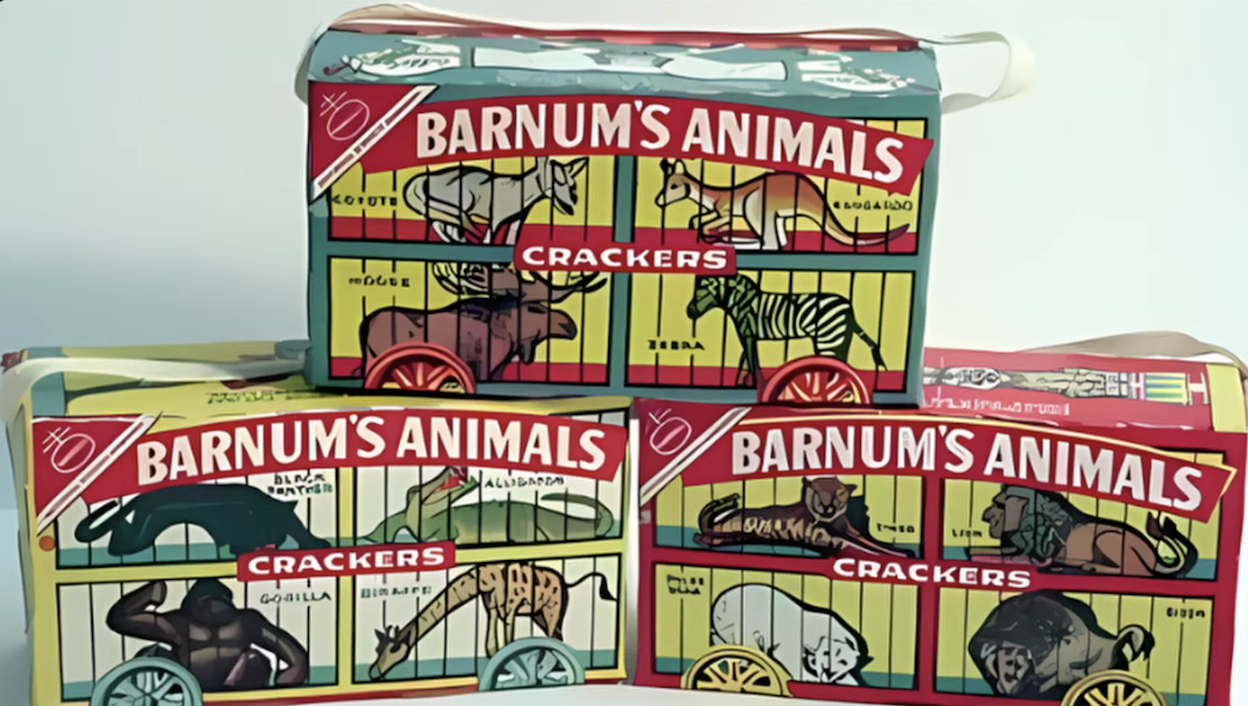
The journey of Animal Crackers begins in the late 1800s in England, where bakers sought to delight children with whimsical animal-shaped biscuits. These sweet treats, often resembling lions, elephants, and bears, were both playful and delicious, quickly becoming a favorite across Europe. Their appeal wasn’t just about taste—it was about imagination, as children marveled at the intricate designs. By the late 19th century, the trend crossed the Atlantic, captivating American consumers. Recognizing their potential, U.S. companies began producing their versions. In 1871, Stauffer’s Biscuit Company in Pennsylvania became one of the first to bake animal crackers domestically, setting the stage for the packaging innovations that would transform these biscuits into a cultural phenomenon.
2. Nabisco Enters the Game With a Circus Theme

In 1902, Nabisco, then known as the National Biscuit Company, revolutionized the animal cracker market with Barnum’s Animals Crackers, a snack named after the legendary circus impresario P.T. Barnum. The box design was a stroke of marketing genius, featuring vibrant illustrations of lions, tigers, elephants, and zebras confined in circus-style cages. This imagery perfectly captured the excitement and wonder of Barnum’s traveling shows, which were at the height of their popularity in early 20th-century America. By aligning the crackers with the spectacle of the circus, Nabisco created an irresistible product that became an instant hit with families, cementing its place as an enduring symbol of childhood joy.
3. A Marketing Masterstroke: The String-Handled Box
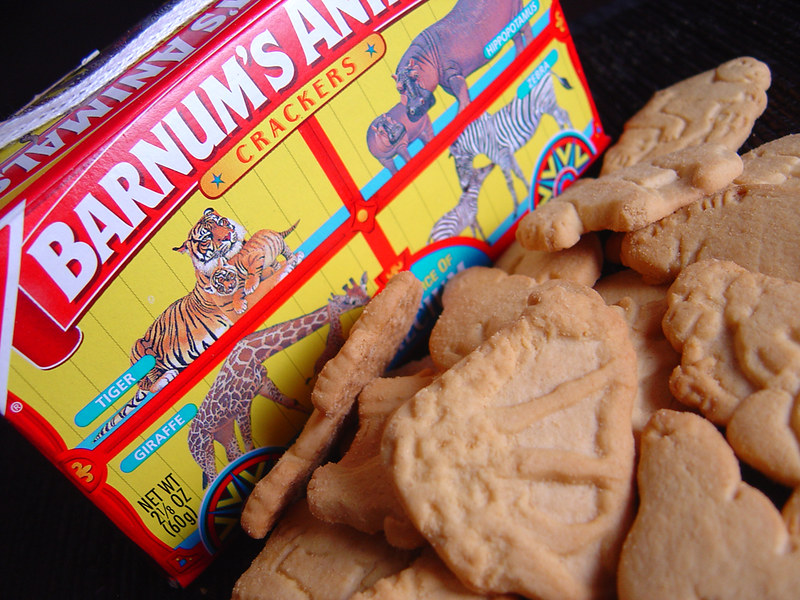
In 1902, Nabisco unveiled a packaging innovation that elevated Barnum’s Animals Crackers from a snack to a holiday tradition: the circus train box with string handles. Designed to double as a Christmas tree ornament, this clever addition captured the hearts of families nationwide. Parents appreciated the practicality of the portable design, while children were enchanted by the vibrant illustrations of caged animals on a colorful train. The box became an instant hit, blending nostalgia with functionality. By the mid-20th century, Nabisco was using 8,000 miles of string annually for these iconic packages, further cementing the crackers’ role as a cherished part of holiday celebrations and American snack culture.
4. The Circus Imagery Captivates Generations
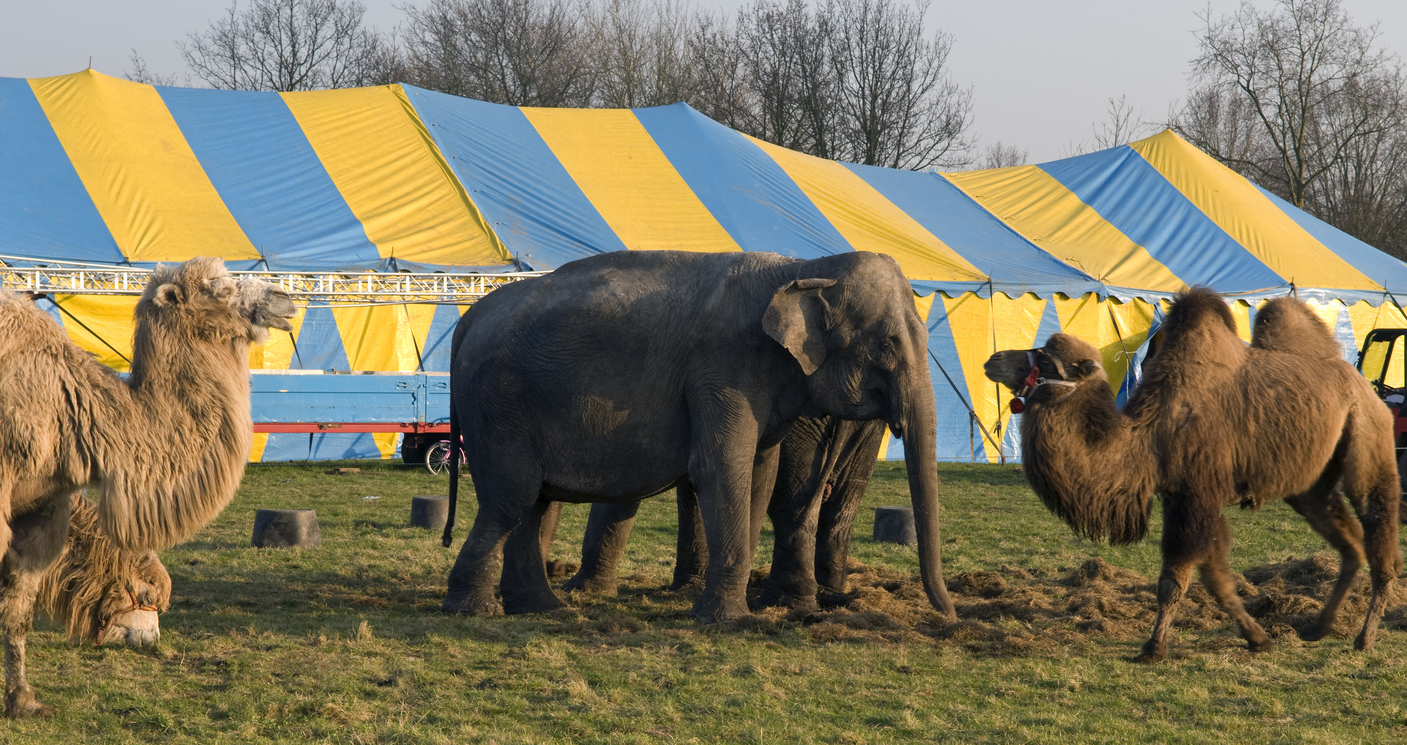
For over a century, the circus-themed design of Barnum’s Animals Crackers became synonymous with childhood wonder and excitement. The box featured vibrant depictions of lions, tigers, elephants, and zebras behind bars, mimicking the traveling animal cages of real circuses. Children were fascinated by the exotic animals, while parents appreciated the sense of adventure the imagery evoked. This colorful packaging turned a simple snack into an icon of American pop culture. Its bold, nostalgic design remained virtually unchanged for decades, solidifying its place in the hearts of families across the country and making Barnum’s Animals Crackers a staple in lunchboxes and pantries everywhere.
5. The Unchanging Classic: A Century of Cages

For over 100 years, the caged-animal design of Barnum’s Animals Crackers box remained virtually unchanged, becoming a symbol of timeless nostalgia. Introduced in 1902, the packaging’s bold imagery of exotic animals behind bars captured the imagination of children and evoked the excitement of the circus. This consistency helped the box stand out on store shelves and created an emotional connection with generations of consumers. Families grew up with the same design, turning it into a beloved staple in American homes. Its remarkable longevity not only reflected its cultural significance but also highlighted its role as one of the most recognizable pieces of snack packaging in history.
6. The Rise of Animal Welfare Awareness
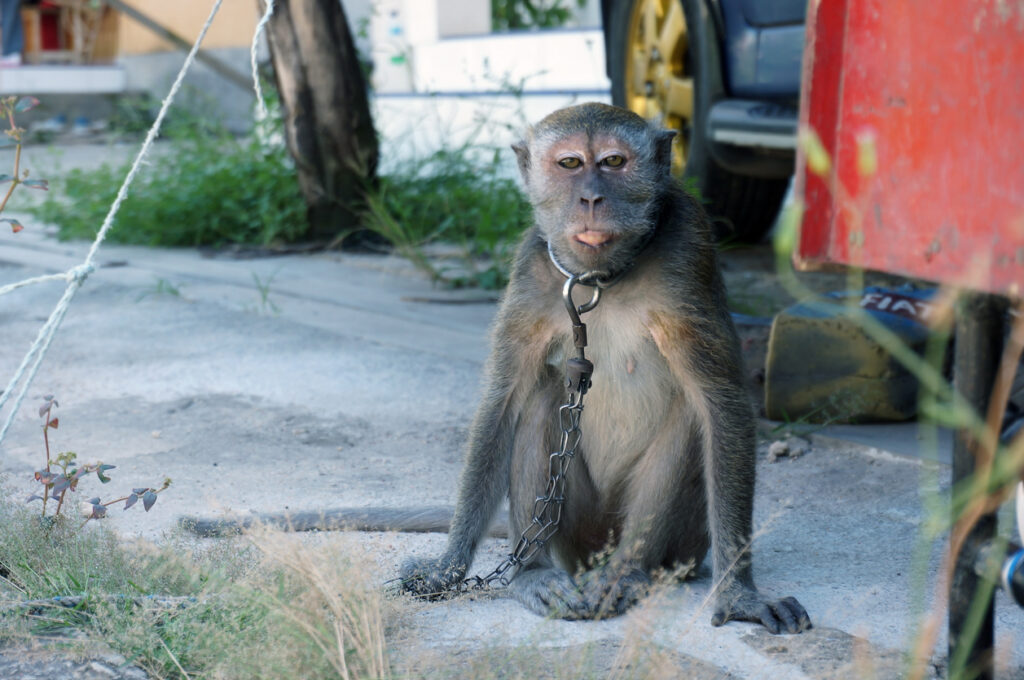
By the late 20th century, public sentiment toward animals and their treatment began to shift dramatically. Documentaries and exposés revealed the harsh realities of life for animals in captivity, including those in circuses. Once celebrated as family entertainment, circuses faced growing criticism for their use of caged animals. This cultural awakening didn’t just impact live performances—it also cast a critical light on products like Barnum’s Animals Crackers box. The once-beloved imagery of caged animals started to feel outdated and problematic, sparking discussions about the ethics of depicting captivity in marketing. This surge in animal welfare awareness set the stage for calls to reimagine the iconic box.
7. Ringling Bros. and Barnum’s Demise Foreshadows Change

In 2017, the legendary Ringling Bros. and Barnum & Bailey Circus—once dubbed “The Greatest Show on Earth”—performed its final act after 146 years. The closure marked the end of an institution that had shaped public perceptions of animals for generations. Declining ticket sales, coupled with mounting pressure from animal rights activists, forced the circus to close its doors. The decision reflected a growing cultural shift away from the use of animals for entertainment and highlighted the public’s evolving views on animal welfare. This historic moment also set the stage for brands like Nabisco to rethink how they portrayed animals, paving the way for significant changes to come.
8. PETA Calls for a Redesign
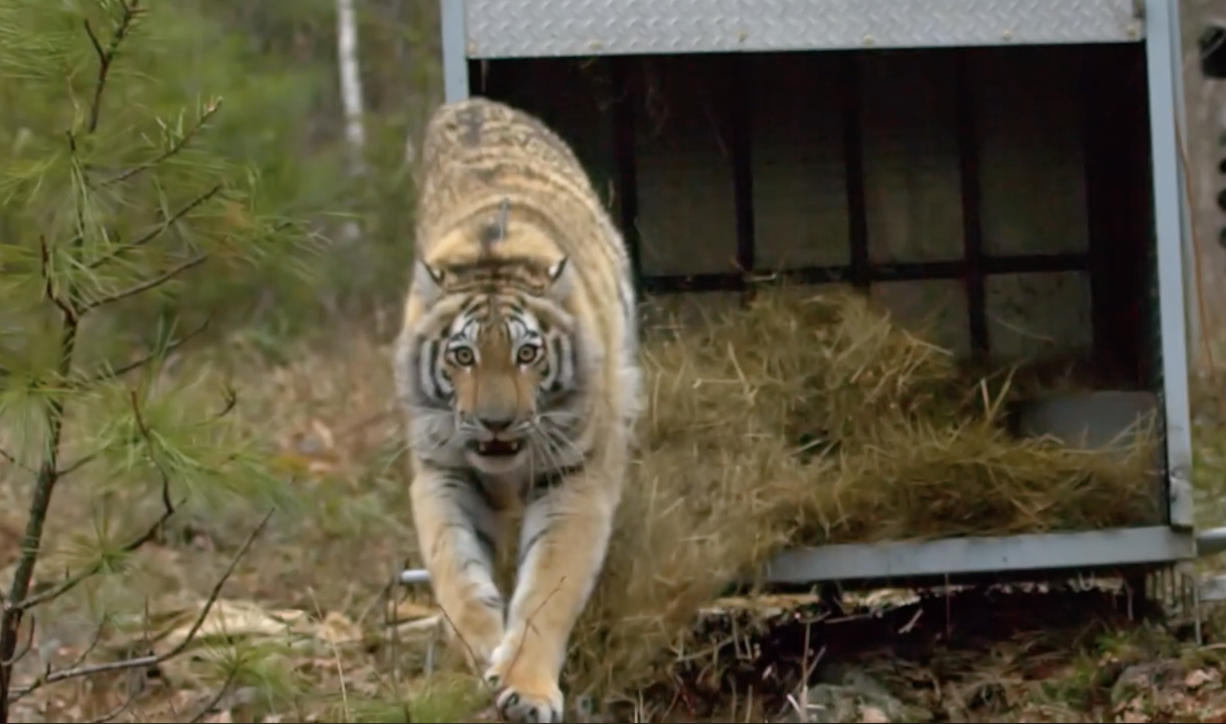
In 2016, PETA launched a bold campaign targeting Nabisco’s iconic Barnum’s Animals Crackers box. Their mission? To retire the caged-animal imagery that had been a staple of the packaging for over a century. PETA argued that the design perpetuated outdated values and failed to align with modern views on animal welfare. The organization emphasized that the imagery, while nostalgic, reflected a time when animal captivity was widely accepted—a stark contrast to the growing global emphasis on ethical treatment. The campaign gained traction, sparking widespread discussion and putting pressure on Nabisco to rethink the design for a more compassionate era.
9. The Public Joins the Debate
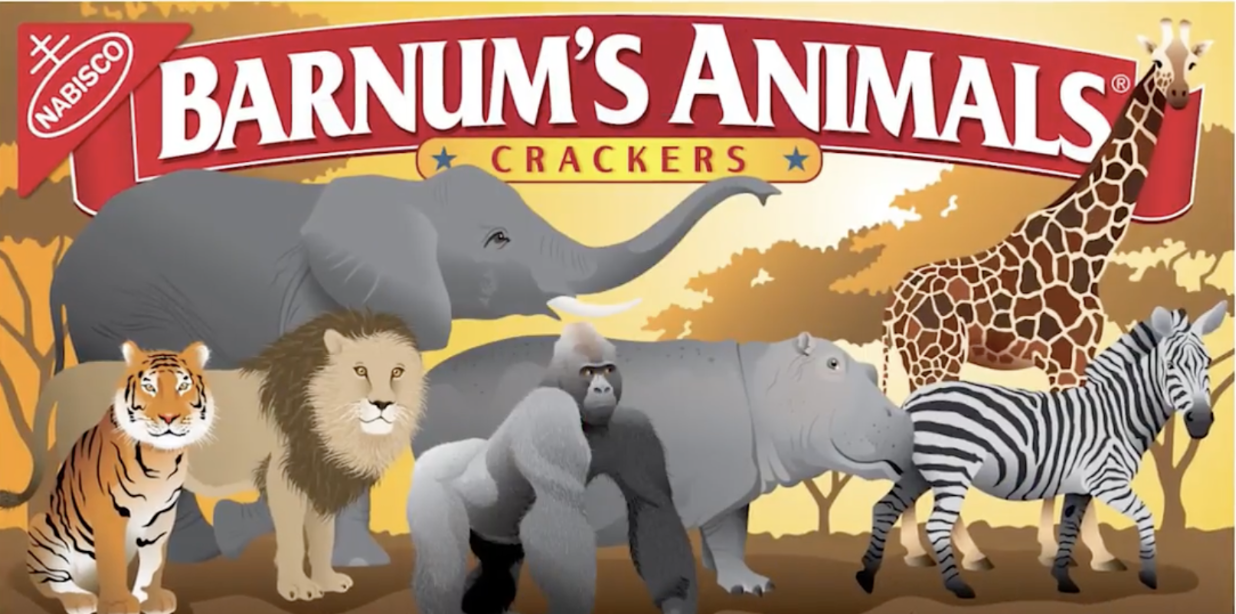
When news of PETA’s campaign to redesign the Barnum’s Animals Crackers box broke, it ignited a fierce public debate. Many applauded the push for change, arguing that the caged-animal imagery was outdated and no longer aligned with modern views on animal welfare. Supporters saw the redesign as an opportunity to reflect progress and compassion. However, others viewed the imagery as harmless nostalgia, a beloved symbol of childhood memories tied to the excitement of the circus. Social media platforms became a battleground for these differing perspectives, with heated discussions highlighting the emotional connection many had to the original design. This debate underscored the challenge of balancing tradition with societal evolution.
10. Nabisco Announces a Major Change
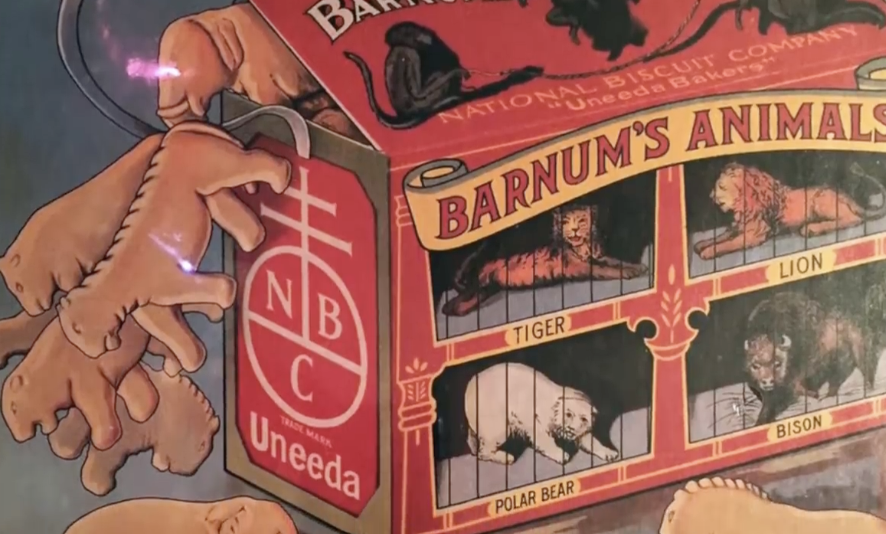
In 2018, Nabisco shocked the snack world with a historic announcement: after 116 years, Barnum’s Animals Crackers box would undergo a bold redesign. The new packaging would no longer feature lions, tigers, and elephants behind bars. Instead, it would depict the animals roaming freely in a lush savannah, symbolizing freedom and aligning with contemporary views on animal welfare. The decision marked a monumental moment for the brand, reflecting its willingness to adapt to modern societal values. Widely regarded as a progressive step, the redesign made headlines globally and signaled the end of one of the longest-running visual traditions in snack history.
11. The Cage-Free Box Debuts
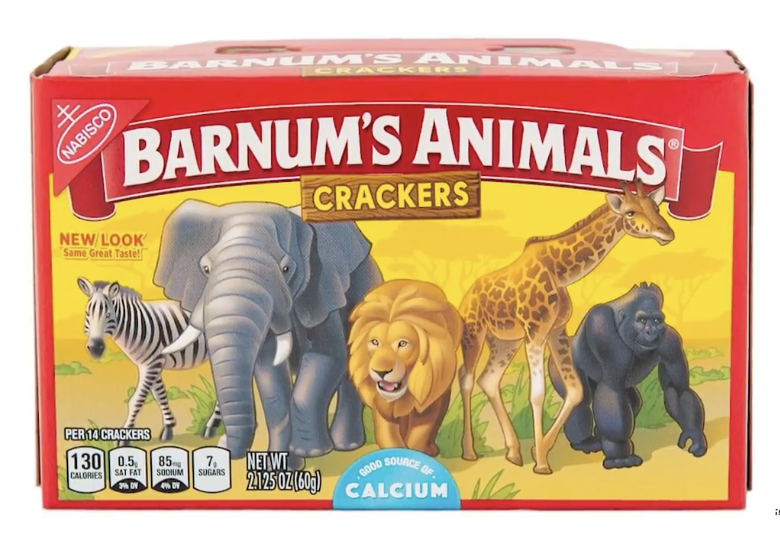
In 2018, the redesigned Barnum’s Animals Crackers box finally hit shelves, showcasing a bold new look that reflected modern values. Gone were the barred cages of the original design. Instead, elephants, zebras, lions, and other animals were depicted roaming freely in an open, natural savannah setting. The vibrant, updated artwork symbolized freedom and offered a fresh perspective on the brand’s message. This significant departure from the original circus theme not only aligned with contemporary views on animal welfare but also preserved the playful charm that made the snack a childhood favorite. The redesign marked a turning point for Nabisco, proving that even nostalgic icons can evolve with the times.
12. Was It Ethics or Marketing?

The redesigned Barnum’s Animals Crackers box stirred questions about Nabisco’s motives. Was the cage-free imagery a sincere reflection of evolving ethical standards, or a savvy marketing ploy to align with socially conscious consumers? Critics argued that the redesign might have been a strategic move to tap into the growing demand for brands to reflect modern values. However, whether motivated by ethics or business strategy, the decision achieved something significant: it sparked a widespread cultural conversation about animal rights, corporate responsibility, and the power of branding to influence societal change. The redesign proved that even small updates to familiar products could have far-reaching impact.
13. A Design That Mirrors Societal Change

The cage-free redesign of Barnum’s Animals Crackers box symbolized more than a simple update in packaging—it reflected a profound shift in societal values. As traditional circuses faced growing backlash and closures, including the historic end of Ringling Bros. in 2017, public attitudes toward animal captivity evolved. Awareness of animal rights surged, sparking a cultural shift away from the exploitation of animals in entertainment and media. By replacing caged animals with free-roaming creatures, Nabisco’s redesign aligned with these changing times, positioning the brand as a forward-thinking company that understood and embraced its responsibility to reflect modern ethical standards.
14. The Legacy of the Original Box

Though the cage-free design ushered in a new era, the original circus train box remains a cherished symbol of nostalgia for many. Introduced in 1902, its vibrant illustrations of caged animals and clever string handles captured the imaginations of generations, turning a simple snack into a cultural icon. The design’s bold colors and playful theme created a deep emotional connection, evoking memories of childhood and the excitement of the circus. For over a century, it became a fixture in American households, serving as both a practical package and a beloved piece of history. The legacy of this classic design endures, even as the brand evolves.
15. A Precedent for Ethical Branding

Nabisco’s bold decision to redesign Barnum’s Animals Crackers box proved that even the most iconic brands can evolve to meet modern consumer expectations. The move reflected a growing demand for ethical branding, where companies align their products with societal values. By replacing caged animals with free-roaming creatures, Nabisco demonstrated how a small but meaningful change can resonate with socially conscious audiences. This decision set a powerful precedent, encouraging other companies to rethink their branding strategies to reflect evolving cultural norms. It proved that honoring tradition doesn’t have to come at the expense of progress, opening doors for innovation across industries.
16. What’s Next for the Box?
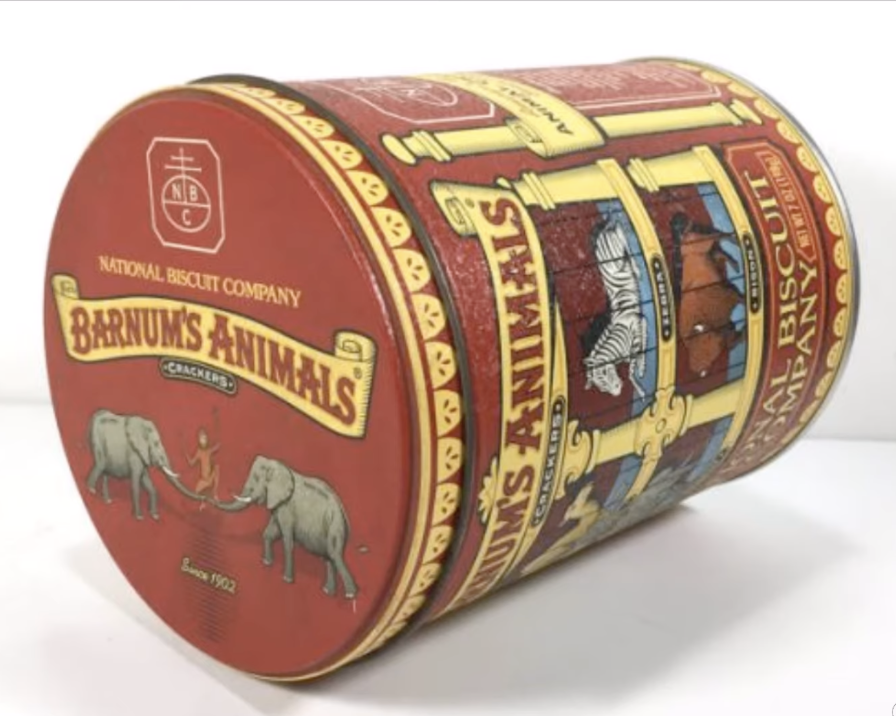
With sustainability becoming a key focus for consumers, the next chapter for the Barnum’s Animals Crackers box could involve eco-friendly innovations. Imagine packaging made from biodegradable materials or designs that raise awareness about endangered species, with a portion of profits supporting wildlife conservation efforts. Such updates would build on the brand’s commitment to aligning with modern values, transforming the box into more than just a container—it could become an educational tool and a force for positive change. By combining entertainment, ethics, and sustainability, Nabisco has the opportunity to set a new standard for packaging in the snack industry.
17. A Symbol of Progress
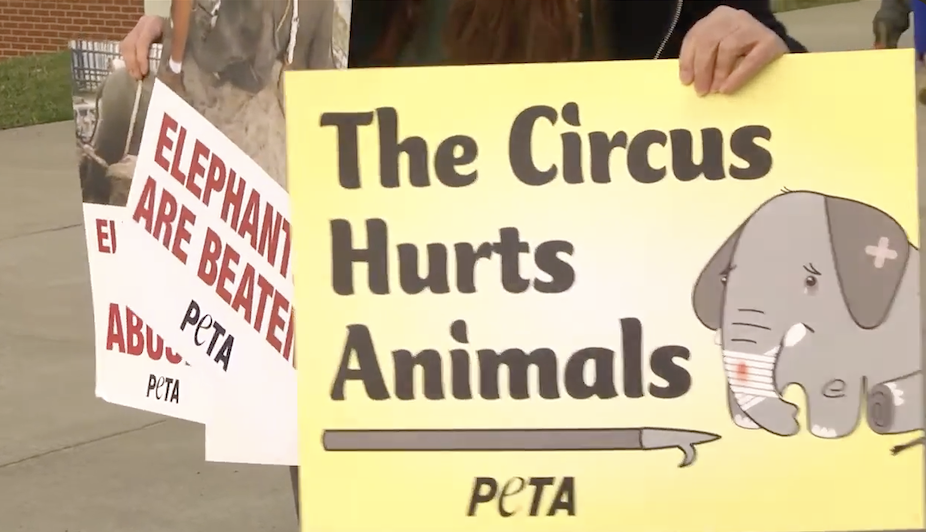
The cage-free Barnum’s Animals Crackers box represents far more than a packaging update—it’s a bold cultural statement about progress and ethical responsibility. By depicting animals roaming freely in a natural setting, the redesign reflects a broader shift in how society views its relationship with animals. It challenges outdated notions of captivity and embraces a message of compassion and respect. This small yet powerful change signals how brands can influence conversations about ethics and societal values. Beyond its immediate impact, the box sets an example for future generations, showing that even a beloved classic can evolve to align with modern ideals of kindness and progress.
18. From Cages to Freedom: A New Chapter
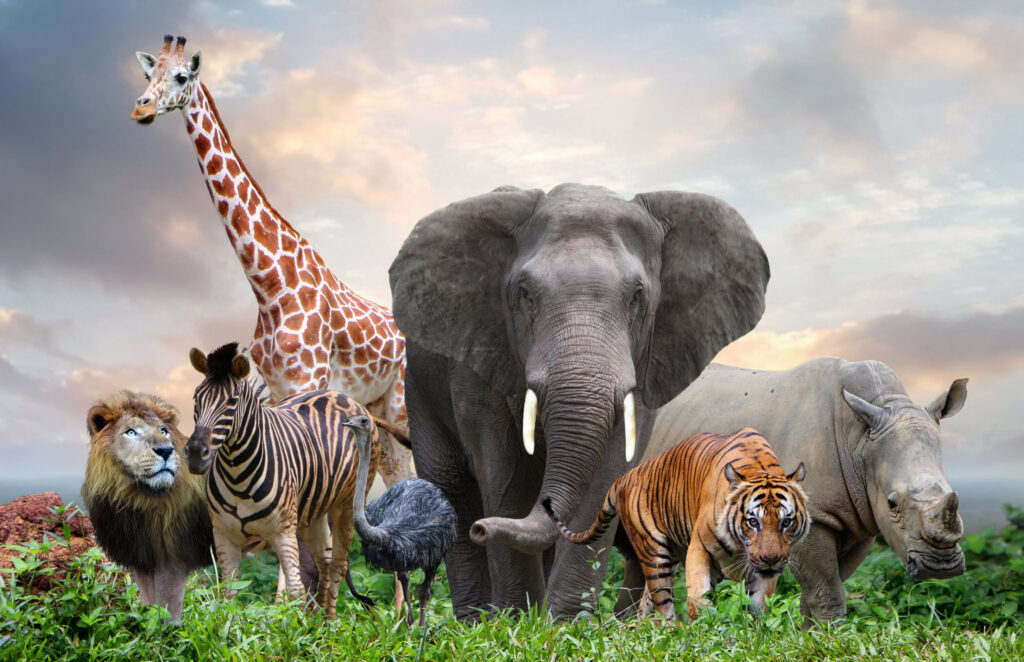
The transformation of the Barnum’s Animals Crackers box is a powerful testament to the impact of societal change. What started in 1902 as a nostalgic nod to circuses with caged animals has evolved into a symbol of progress, compassion, and ethical responsibility. The redesigned box, featuring free-roaming wildlife, reflects how brands can adapt to align with shifting values while preserving their legacy. It’s more than just a box; it’s a mirror of how far we’ve come in rethinking our relationships with animals and the messages we send to future generations. As its story continues, the iconic packaging remains a symbol of both tradition and transformation.


